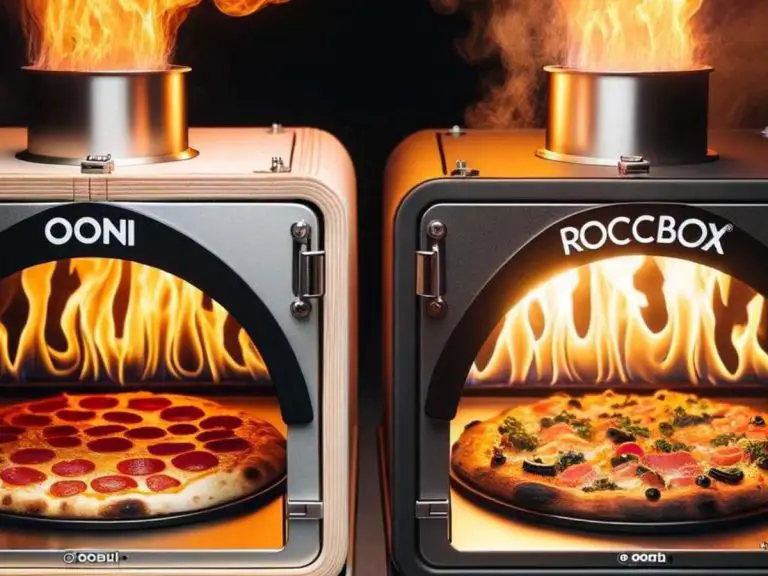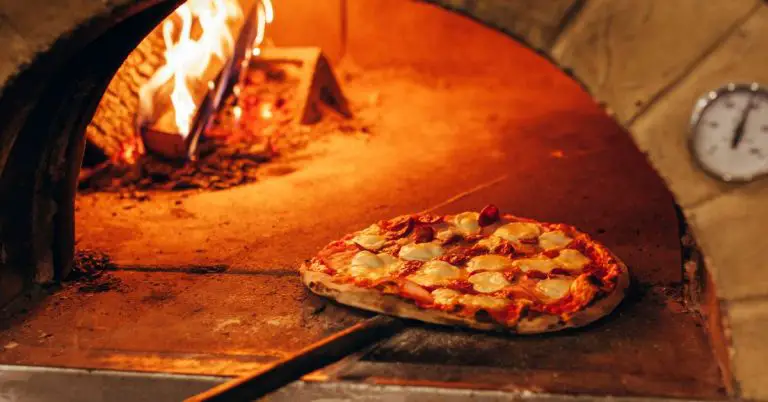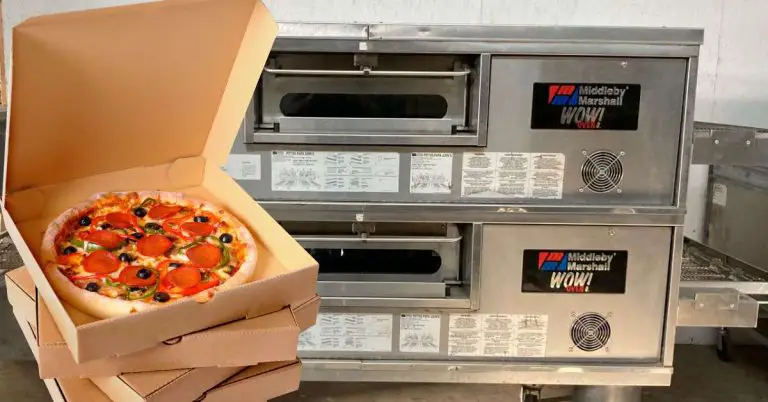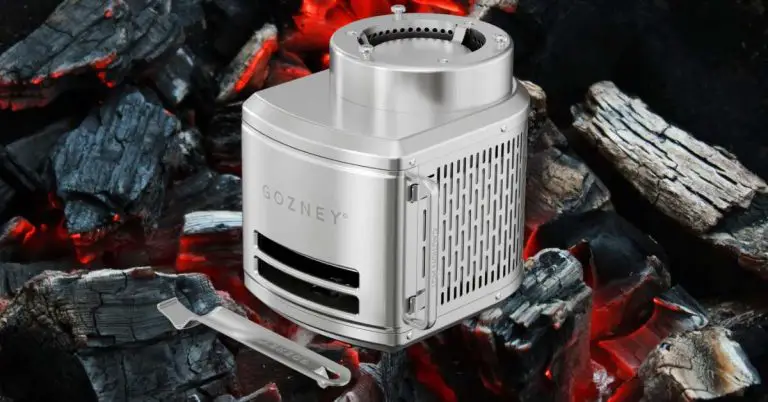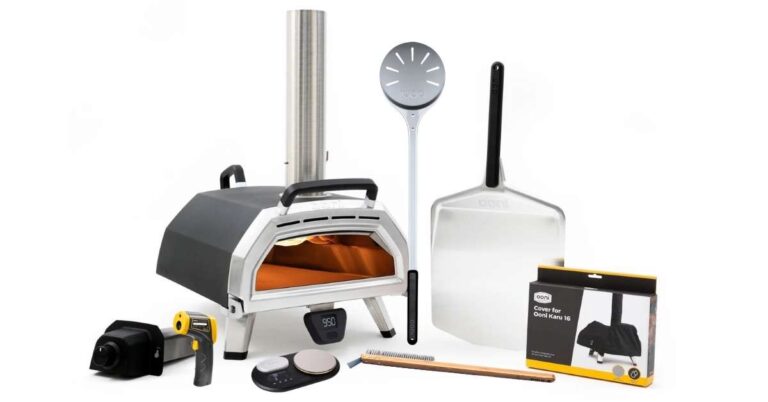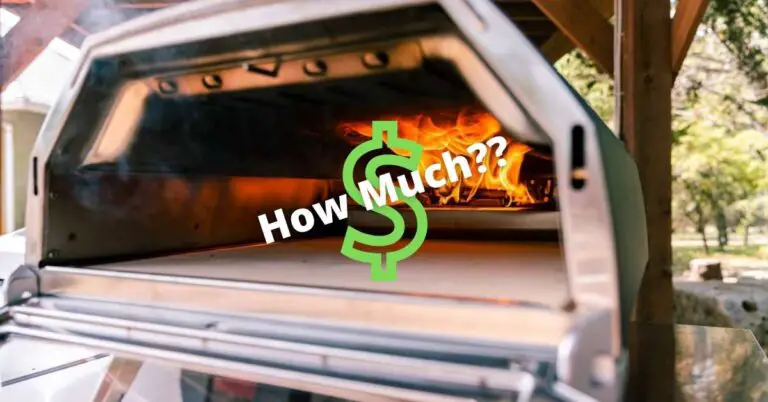What’s the Best Wood for a Wood-Fired Pizza Oven? Why Hardwood is Better
Having a good wood-fired pizza oven allows you to make pizza with an authentic wood-fired flavor right at home. But to get the iconic thin, crispy crust that’s still tender in the middle, you need to use the right type of firewood.
To fuel your wood-fired pizza oven, quality hardwoods like oak, maple, and hickory work best. Make sure the wood is properly seasoned with under 20% moisture content. Allow the oven to preheat fully before baking. When at temperature, the wood will provide consistent heat and mild smoke to bake an incredible pizza.
Once you’ve sourced some well-seasoned hardwood logs or planks, arrange them in the oven to establish a hot coal bed. The hardwood flame will give the crust a touch of smoky flavor while producing those characteristic “leopard spots” we all love so much. Use an oven thermometer and add more wood logs as needed to maintain the ideal temperature of 750F or above.
If you’re looking for a recommendation on what type of wood to buy and where, Ooni offers a great selection of premium hardwood oak logs. If you’re using a portable wood-fired pizza oven, this is your best bet in terms of performance and taste.
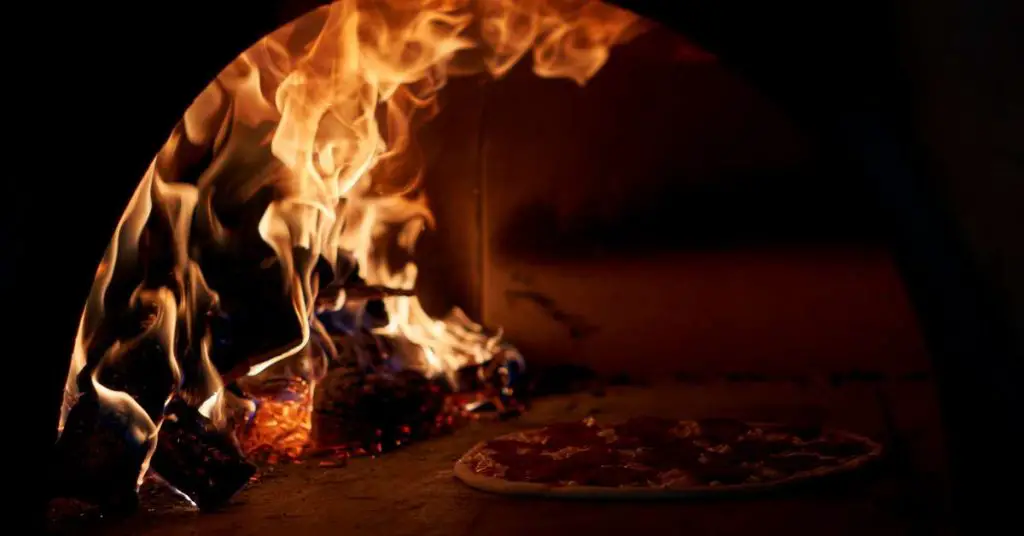
Why the Type of Wood Matters
Wood burns extremely hot in comparison to other kinds of fuel, but not all types are the same. A good hardwood, for example, burns easily and cleanly. This affects both the temperature of the oven and the quality of the pizza it produces.
This is especially important when cooking traditional styles of wood-fired pizza, such as Neapolitan. Neapolitan style pizza relies on an intense burst of heat to essentially “flash cook” in under a minute. This is how Neapolitan pizza gets its signature crispy crust that’s still moist in the middle.
By comparison, New York and New Haven style pizza feature a chewier and crispier crust. These styles are cooked slowly under a less intense heat, and usually not in a wood-fired oven (coal and propane are preferable).
Related Post: Wood-Fired or Gas Pizza Ovens: What’s the Difference and Which is Better?
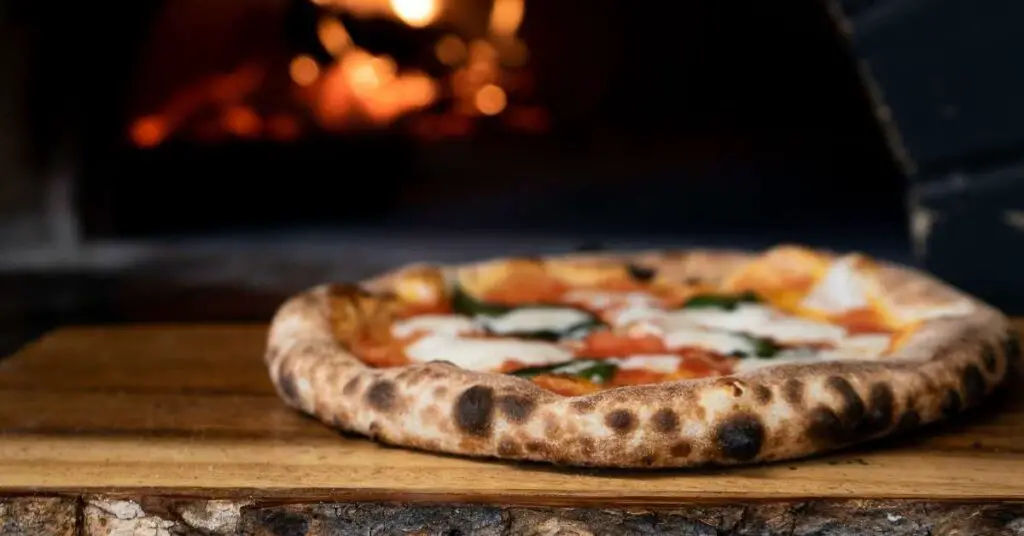
Pros and Cons of Different Types of Wood
| Type of Wood | Pros | Cons |
|---|---|---|
| Hardwood (e.g., Oak, Hickory, Mesquite) | Burns hot and long, ideal for cooking pizza, gives off a mild, smoky flavor to the pizza, dense wood that produces consistent heat | Can be more expensive than other types of wood, some types (like Hickory and Mesquite) have a strong flavor that might be overpowering for some |
| Softwood (e.g., Pine, Spruce) | Easy to light, burns quickly, good for starting the fire | Burns at lower temperatures, not ideal for cooking pizza, burns quickly, requiring frequent replenishment, high sap content can produce a lot of smoke and affect the flavor of the pizza |
| Fruitwood (e.g., Apple, Pecan, Plum) | Can impart a unique, fruity flavor to the pizza, burns at a moderate temperature, good for cooking pizza | Can be harder to source than other types of wood, burns quicker than hardwood, requiring more frequent replenishment |
Hardwoods are Best for a Wood-Fired Pizza Oven
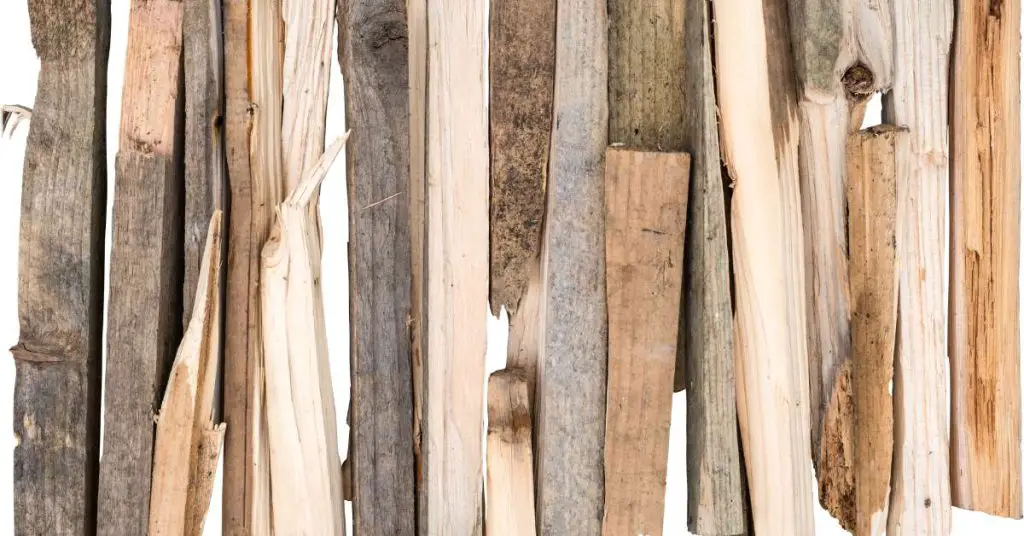
When fueling my pizza oven, I always choose hardwoods over softwoods. Let me explain the differences between these woods and why I make this choice.
Hardwood trees (like oak, maple, hickory, and fruitwoods) are known as “angiosperms”. This means they produce seeds with a protective outer coating. On the other hand, softwoods like pine are called “gymnosperms” because they produce naked seeds without an outer cover.
This technical difference affects the density and composition of the wood. Hardwoods are generally slower growing trees that produce a dense, close-grained wood, while softwoods grow faster and have a more porous, open grain.
When burned, the unique cellular structure of hardwood allows it to burn longer, slower, and produce more heat. Softwoods burn hot, but tend to sputter out quickly.
In a wood-fired pizza oven, the intense heat of a hardwood fire is crucial for baking the crust properly. A hot fire upward creates the conditions needed for the “oven spring” effect that gives pizza crust its bubbly, charred texture and leopard spots.
Hardwood also imparts a more complex, nuanced flavor in my opinion. Softwoods like pine give off a harsher, more resinous smoke that can overwhelm the pizza. The milder tannins in hardwood smoke enhance the dough’s natural flavors, which is what makes them the obvious choice for most people.
Fruitwoods like apple, cherry, and pecan are a type of hardwood with a low resin content. This gives them a sweeter, more aromatic smoke flavor.
For baking authentic wood-fired pizza, seasoned hardwood from trees like oak, maple, and hickory can’t be beat in my experience. Their long-lasting, concentrated heat and smoky essence take my pizza to the next level.
If Possible, Look for Kiln-Dried Hardwoods
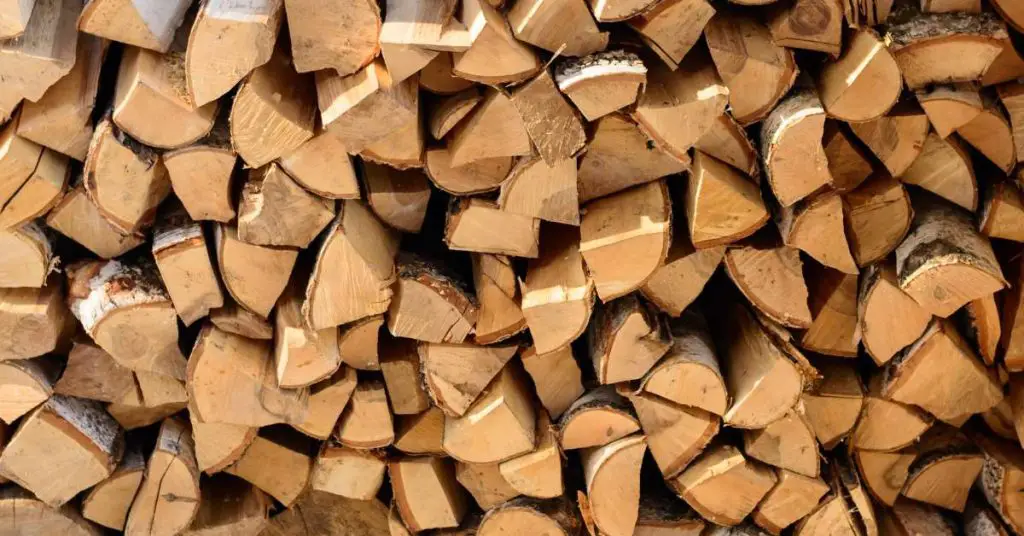
One way to ensure your logs have an ideal moisture content is to use kiln dried hardwood. Kiln drying is a process that rapidly removes moisture from wood using a large oven-like enclosure called a kiln. In other words, it’s basically baked wood.
With kiln drying, hardwood logs are placed inside the heated kiln which circulates hot air around the wood. The kiln temperature is carefully controlled, often starting around 100°F and slowly increased to over 200°F. This forces moisture within the wood to evaporate.
The kiln drying process can remove nearly all the moisture until the wood reaches the target dryness, usually less than 10% moisture content. Drying the wood this quickly prevents it from rotting or developing mold growth.
Using kiln dried hardwood for your pizza oven provides several benefits:
- Consistent moisture content below 20% for clean burning
- Eliminates hissing/popping from wet wood
- Lights quickly and easily to reach high temperatures fast
- Burns efficiently and evenly for excellent heat control
- Long burn times from dense, dry hardwood
- Pure wood flavor without dampness altering taste
While kiln dried wood does cost a bit more than air dried firewood, the advantages are worth it for optimal wood-fired pizza results. Just be sure any kiln dried wood you purchase is 100% hardwood from known origins. You can find kiln dried oak, hickory, maple and other hardwoods from specialty suppliers online or locally to really make your pizza oven sing.
Ooni carries a great blend of kiln-dried oak hardwood that’s already cut into the perfect size.
Factors to Consider When Choosing Wood
Now that I’ve covered why hardwoods like oak and maple are best for cooking pizza, let’s look at some other factors I take into account when selecting firewood.
One thing I always evaluate is moisture content. I use a wood moisture meter to test that my wood has dried to less than 20% internal moisture before burning. Wet wood makes it hard to achieve and maintain high oven temperatures. Note, a moisture meter isn’t necessary if you’re buying wood precut and seasoned from a reputable source.
I also think about wood density. While very dense exotic hardwoods can produce a lot of heat, they may be difficult to ignite. I tend to stick to moderately dense woods like oak and ash that light easily yet still burn hot.
When I buy wood, I check that the logs are split small enough, around 2-3 inches thick and 12-18 inches long if I’m going to be using them in a portable pizza oven like the Ooni Karu 12G or Gozney Roccbox. Properly sized logs burn efficiently and can be arranged neatly in the oven.
How the wood is stored matters too. I keep my wood seasoned, stacked, and sheltered from rain and snow. Well-prepared wood lights fast without any hissing and popping.
And I always consider flavor. Fruit and hickory woods add nice smoky complexity, while maple provides a subtle sweetness. The wood taste should accentuate, not overwhelm, the pizza.
Lastly, I think about the wood’s origins. I avoid any mystery wood, painted or treated lumber, and instead use untreated hardwood from sustainable sources. This ensures safety and performance.
With some forethought on moisture, density, size, storage, flavor, and sourcing, you’ll get the most out of your wood and the results will (hopefully) be worth it.
Breakdown of the Best Types of Wood for Pizza Ovens
When it comes to flavoring your pizza, not all wood is equal. Different wood varieties have their own distinct properties that affect taste and performance in the oven. Here are some of the factors that set woods apart:
- Density – Denser woods like oak and hickory burn slower and generate more heat. Softwoods burn faster with less heat.
- Resin content – Woods with higher resin or sap like pine and mesquite burn fast but can give off a bitter flavor. Low resin woods give off a milder taste.
- Hardwood vs. softwood – Hardwoods from angiosperm trees are superior to softwoods from gymnosperm trees. They burn better and produce better smoke.
- Mild vs. strong flavor – Some woods like alder have delicate flavor, while mesquite and hickory are quite intense. It depends on your flavor preferences.
- Fruitwood vs. forest wood – Fruit and nut woods provide touches of sweetness, while forest woods have more earthy essences.
- Origin and growth rate – Old-growth woods burn best. Faster-growing varieties like pine are less dense.
- Moisture content – Well-seasoned, dried wood under 20% moisture burns cleanly. Wet wood smolders and hampers heat.
Now keep in mind that the “best” wood type is highly subjective based on individual tastes and the type of pizza you’re making. But in my opinion, here are some top-performing and most popular wood varieties:
Oak
Oak, especially white oak, is one of the most popular woods for pizza. It burns long and steady while producing mild, nuanced smoke. Oak gives just a hint of woodsy flavor that complements most toppings. Oak can be found at most firewood dealers (or any store that sells wood-fired ovens) and is generally very easy to use.
Hickory
Hickory shares oak’s dense grain and high heat output. But it imparts a fuller, smokier taste. The bold flavor pairs well with meat toppings but can overpower lighter ingredients. Pecan adds similar flavor with less intensity.
Maple
Maple burns hot while providing a touch of natural sweetness. The subtle maple smoke complements both savory and sweet pizzas. The wood is generally sustainable and affordable too.
Mesquite
Mesquite burns fast and hot, making temperature control tricky, but it pays off with an intense, earthy smoke flavor. It’s fantastic with veggies but some people say it can overpower meats (though I don’t generally agree with that). The wood’s rarity can often bump up the cost as well.
Alder
Alder has a mellow, slightly fruity essence that’s mild enough for any pizza. It burns efficiently with little smoke, which is perfect for making a “quick” wood-fired pizza. But the mild taste may get lost with bold toppings—works best with Margherita, in my opinion.
Ash
Ash lights easily and burns consistent and slow. It has very mild flavor allowing the toppings to shine. Ash is a great choice for beginners learning temperature control.
Walnut
Walnut mixes great with fruit and veggie pizzas. The rich, nutty smoke stands up to cheeses and herbs. It can become bitter if burned too hot though, so combining it with milder woods helps.
With so many amazing wood types to choose from, part of the fun is experimenting to find your favorites. The key is matching the wood’s intensity and flavor profile to your ideal pizza.
Tips for Choosing the Best Wood

Now that we’ve covered some top wood varieties, here are my tips for selecting the ideal firewood for your individual oven and pizza style:
- First, think about the flavor intensity you want. If you like just a subtle wood-kissed taste, go for lighter woods like maple or ash. For big smoky flavor, use hickory or mesquite. I suggest starting mild until you know your preferences.
- Consider what toppings you typically use too. Fruitwoods complement veggie pizzas nicely. But their delicate smoke can get lost with spicy meats. Woods like oak work for almost any pizza recipe.
- Your region and local availability should factor in as well. In the Northeastern US, maple and oak are plentiful. Mesquite dominates the Southwestern US but can be scarce elsewhere. I source native woods when possible for freshness and sustainability.
- If you’re using your own wood, always inspect it for proper moisture content before burning. Use a moisture meter to test for a reading of 20% or less. Avoid wet woods that sputter and inhibit ideal oven temperatures.
- Proper storage and seasoning are also key. Stack wood in a covered area so it dries out over 6-12 months before using. Well-prepared wood lights easily and burns efficiently.
In general, I recommend using hardwoods sourced locally and sustainably. Stay away from softwoods like pine that burn erratically. And never use treated lumber or woods with an unknown origin.
Don’t be afraid to experiment with different types of wood and combinations. I like mixing a mild fruitwood for aroma with a dense hardwood for heat. Find what works for the pizza that makes your tastebuds sing.
Final Thoughts
Finding the perfect wood may take some trial and error, but I hope these recommendations give you a head start on which woods work wonderfully in wood-fired pizza ovens. The keys are choosing a dense, seasoned hardwood that can burn hot and long while adding a hint of smoky aroma. With the right fuel and a bit of practice, you’ll be serving incredible artisan-style pizzas from your own backyard oven in no time.
Key Takeaways
- Hardwoods like oak, maple, and hickory make the best pizza oven fuel.
- Avoid softwoods, treated woods, or wood with high moisture content.
- Look for woods that burn hot, long, and consistently.
- Fruitwoods add nice flavor, but may lack heat.
- Consider intensity of flavor desired – mild or bold smoke.
- Match wood type to common pizza toppings used.
- Source high quality native hardwoods locally when possible.
- Ensure proper wood storage and seasoning for at least 6 months.
- Use a moisture meter to test wood under 20% moisture.
- Favor oak, hickory, maple, fruitwoods, ash and walnut.
- Experiment with different woods and combinations.
- Finding the right wood may take trial and error.
- Well-prepared hardwood results in great pizza from a wood-fired oven.
Related Questions
What wood do Italians use in pizza ovens?
Italians use many different types of woods for their pizza ovens, but among the most popular is Beech wood, which is very commonly found in Europe.
Can you use any hardwood in pizza oven?
Most hardwoods will work fine in a wood-fired pizza oven, as long as it’s been properly dried and cut. In general, I recommend opting for kiln-dried hardwood over air-dried because it lights quicker and burns cleaner. It can be a bit more expensive, though.

